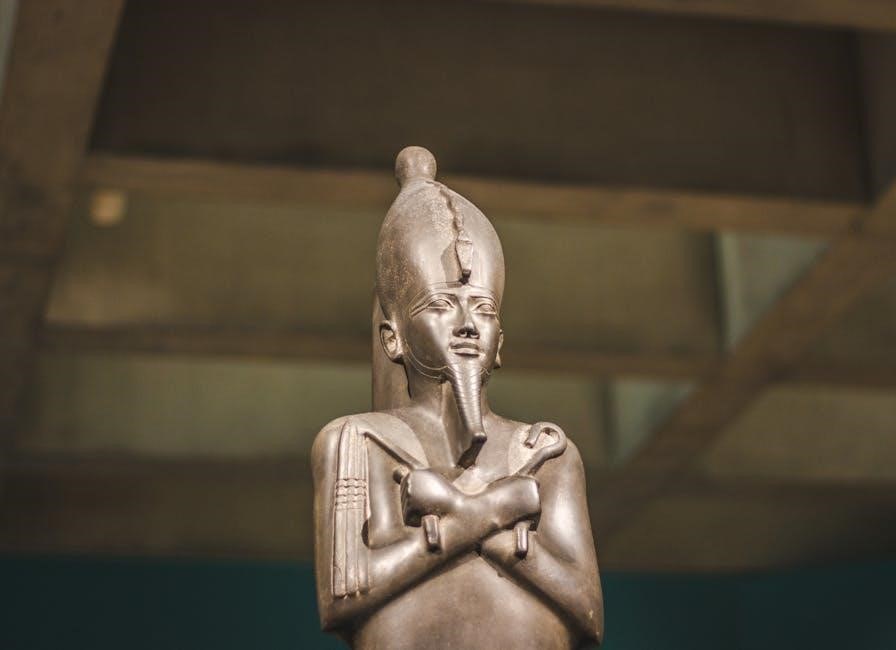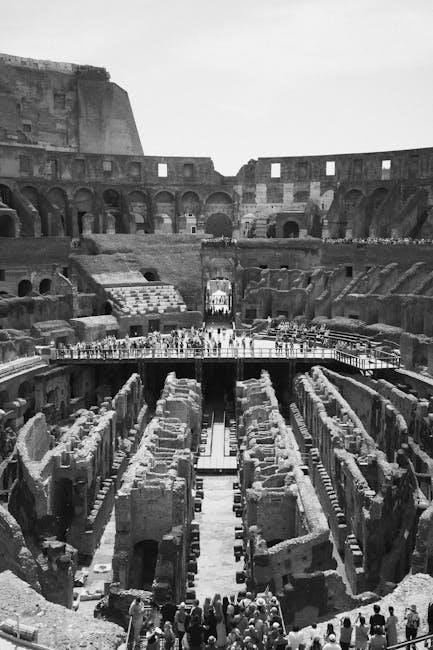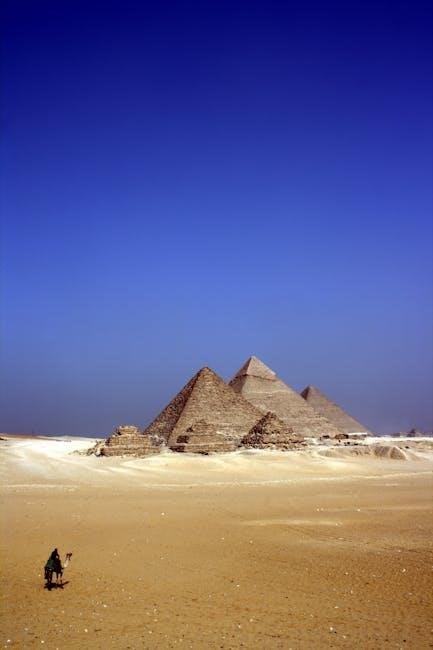Cataclysm Archaeology Guide
Welcome to the comprehensive guide for Cataclysm Archaeology! This profession allows players to unearth artifacts and uncover the mysteries of Azeroth’s past. This guide will provide you with the knowledge needed to efficiently level your Archaeology skill and discover valuable rewards‚ focusing on the most effective methods.
Archaeology is a secondary profession introduced in Cataclysm Classic‚ allowing players to become virtual Indiana Joneses‚ uncovering fragments of history across Azeroth. Unlike primary professions‚ all players can learn Archaeology‚ regardless of their other professions. It offers a unique way to engage with the game world and discover lore-rich artifacts.
The core gameplay involves surveying dig sites scattered throughout the continents. By using the Survey ability‚ you pinpoint fragment locations and collect them. These fragments are combined to solve artifacts‚ granting skill points and often rewarding players with common items‚ and occasionally rare or even epic treasures.
Archaeology is considered time-consuming‚ requiring patience and dedication. However‚ the rewards can be substantial‚ including powerful gear‚ unique cosmetic items‚ and fascinating insights into Azeroth’s history. This guide aims to provide efficient strategies to minimize the grind and maximize your rewards.
Whether you are seeking powerful items‚ lore‚ or a relaxing alternative to combat‚ Archaeology offers a compelling experience. This guide will walk you through every aspect‚ from finding trainers to efficiently leveling your skill and claiming the best rewards.
Training Archaeology: Finding Your Trainer

Embarking on your archaeological journey begins with locating and training with the appropriate instructor. The initial step is visiting a trainer within either Orgrimmar or Stormwind‚ depending on your faction. These trainers will teach you the basics of Archaeology‚ allowing you to start surveying dig sites and unearthing fragments.
For Alliance players‚ seek out Harrison Jones located in Stormwind Keep. Alternatively‚ Hammon the Jaded Doktor can be found in the Temple of the Moon in Darnassus‚ Professor Ironpants in Hall of the Explorers in Ironforge and Diya in The Vault of Lights in Exodar. Horde players should speak with Belloc Brightblade in Orgrimmar‚ or Adam Hossack and Elynara in Valley of Trials.
These trainers not only teach you the Apprentice level but also possess the knowledge to train you to higher ranks as your skill progresses. You do not need to visit different trainers to learn all ranks of professions. Any Archaeology trainer can teach you all ranks.
Once you’ve located your trainer‚ simply speak with them and select the “Train” option to learn Archaeology. This will grant you the basic Survey ability‚ essential for locating dig sites. With this newfound skill‚ you are ready to begin your archaeological adventure.
Archaeology Surveying: Locating Dig Sites
After training in Archaeology‚ the next step is to locate dig sites across the continents. Dig sites are specific locations where you can use your Survey ability to find artifact fragments. Each continent contains a limited number of dig sites‚ usually four‚ so understanding how to locate them efficiently is crucial for leveling.
To find dig sites‚ open your world map. Areas with active dig sites will be marked with a small shovel icon. These icons indicate the general vicinity of a dig site‚ but you’ll need to use your Survey ability to pinpoint the exact location. The Survey ability‚ learned from your Archaeology trainer‚ is your primary tool for locating fragments.
When you arrive at a dig site‚ use the Survey ability. This will deploy a telescope-like device that points in the direction of the nearest fragment. The color of the light emitted from the telescope indicates the distance to the fragment: red means far away‚ yellow means closer‚ and green means very close. Follow the direction of the telescope and continue using Survey until you find the fragment deposit.
Remember that dig sites can despawn‚ so it’s essential to survey the area quickly and efficiently. Once you’ve exhausted a dig site‚ move on to another marked location on your map.
Leveling Archaeology: Efficient Strategies
Efficient leveling in Archaeology involves maximizing skill point gains while minimizing wasted time. A key strategy is to focus on digging for fragments until you reach a certain skill level‚ then switching to solving artifacts. Initially‚ digging up fragments provides a guaranteed skill point‚ making it the most efficient method.
For the first 50 skill levels‚ concentrate solely on surveying dig sites and collecting fragments. Avoid solving artifacts during this phase‚ as the primary goal is to quickly gain initial skill points. Once you reach level 50‚ digging fragments will no longer grant skill points. This is the signal to transition to solving artifacts.
After level 50‚ solving artifacts becomes the primary source of skill points. Common artifacts grant 5 skill points‚ while rare artifacts provide 15. To optimize this process‚ save your fragments and keystones until digging stops giving skill points. Then‚ begin solving artifacts to efficiently level to the cap.
Consider leveling in intervals to avoid burnout. Set daily goals and take breaks to maintain focus and enjoyment. Remember‚ Archaeology can be time-consuming‚ so pacing yourself is crucial.
Leveling Archaeology: Skill Points from Digging
Gaining skill points through digging is a fundamental aspect of leveling Archaeology. Every time you successfully excavate a fragment from a dig site‚ you receive a skill point. This method is particularly effective during the early stages of leveling‚ providing a consistent and reliable way to increase your skill.
Initially‚ from skill levels 1 to 50‚ digging is the most efficient way to gain skill points. Each survey and subsequent dig will award you a skill point‚ regardless of the race or type of fragment discovered. This makes the early levels relatively quick and straightforward.
To maximize your skill point gains from digging‚ focus on visiting as many dig sites as possible and completing each one fully. Use the Survey ability to locate fragments within the dig site and carefully excavate them. Be sure to collect all available fragments before moving on to the next dig site.
However‚ it’s important to note that digging only provides skill points up to level 50. Beyond this point‚ you will need to rely on solving artifacts to continue leveling your Archaeology skill. Therefore‚ optimize your digging strategy during the initial levels to make the most of this efficient method.
Leveling Archaeology: Skill Points from Solving Artifacts
Once you reach Archaeology skill level 50‚ digging ceases to provide additional skill points. At this stage‚ solving artifacts becomes the primary method for leveling your profession. Solving artifacts involves combining fragments collected from dig sites to recreate historical items‚ granting you skill points upon completion.
The number of skill points awarded for solving an artifact depends on its rarity. Common artifacts typically grant 5 skill points‚ while rare artifacts provide a substantial 15 skill points. Therefore‚ prioritizing the completion of rare artifacts can significantly accelerate your leveling progress.
To efficiently gain skill points from solving artifacts‚ it is advisable to save fragments and keystones gathered during the initial digging phase. Once digging no longer yields skill points‚ you can begin solving artifacts en masse‚ maximizing your skill point gains.
Furthermore‚ solving artifacts not only provides skill points but also rewards you with an item. While most of these items are of common quality and have limited value‚ there is a chance to discover rare and valuable items‚ making artifact solving a potentially lucrative endeavor in addition to its leveling benefits.
Leveling Archaeology: Efficient leveling intervals
Leveling Archaeology can be a time-consuming process‚ potentially leading to fatigue and reduced efficiency. To mitigate this‚ it’s advisable to approach leveling in intervals‚ setting achievable goals for each play session. This prevents burnout and maintains focus‚ optimizing your overall leveling speed.
Consider setting daily goals‚ such as reaching a specific skill level or completing a certain number of dig sites. After achieving your goal‚ take a break to refresh your mind and prevent monotony. This structured approach makes the grind more manageable and enjoyable.
Experiment with different interval lengths to find what works best for you. Some players may prefer shorter‚ more frequent breaks‚ while others may find longer intervals more suitable. The key is to identify a pattern that allows you to maintain consistent progress without feeling overwhelmed.
Remember to factor in real-life commitments and schedule your Archaeology sessions accordingly. Avoid playing for extended periods when you are tired or distracted‚ as this can lead to mistakes and wasted time. By leveling in efficient intervals‚ you can maximize your progress and enjoy the journey to 525 skill points.

Racial Bonuses: The Dwarf Explorer Ability
In Cataclysm‚ Dwarves receive a significant advantage in Archaeology due to their racial ability‚ Explorer. This passive ability enhances their proficiency in the profession‚ making them ideal candidates for aspiring archaeologists.
The Explorer ability grants Dwarves increased fragment gathering speed‚ allowing them to acquire more fragments per dig site compared to other races. This translates to faster artifact solving and overall leveling progression.
Furthermore‚ Explorer provides a chance to find additional fragments at each dig site‚ further accelerating the fragment acquisition process. This bonus can significantly reduce the time required to complete artifacts and advance your Archaeology skill.
While other races can still excel in Archaeology‚ the Dwarf’s Explorer ability offers a distinct advantage‚ particularly in the early stages of leveling. The increased fragment gathering speed and bonus fragment chance make them more efficient at acquiring the necessary materials for artifact solving.
If you’re looking to maximize your Archaeology leveling speed‚ consider rolling a Dwarf for their Explorer racial ability; Their inherent advantage will provide a noticeable boost to your fragment gathering efficiency.
Dig Sites Per Continent
In Cataclysm‚ each continent features a limited number of Archaeology dig sites. These dig sites are scattered across various zones‚ offering players diverse locations to excavate fragments and uncover artifacts. It’s important to understand the distribution of dig sites to plan your leveling route effectively.
Each continent typically has four dig sites available at any given time. These locations rotate periodically‚ ensuring that players have access to different areas and artifact types. Keep an eye on your world map to identify the currently active dig sites on each continent.
The Eastern Kingdoms and Kalimdor‚ the two primary continents‚ each feature their own set of dig sites. These locations span across various zones‚ from the northern regions to the southern coasts. Explore these continents thoroughly to discover the available dig sites.
Outland and Northrend‚ the expansion continents‚ also have their own dig sites. While these continents may not be the most efficient for leveling from 1-525‚ they can offer unique artifact types and rewards.
By understanding the dig site distribution per continent‚ you can optimize your Archaeology leveling path and focus on the most productive areas.
Solving Archaeology Artifacts
Solving Archaeology artifacts is a core mechanic in Cataclysm. After collecting enough fragments from dig sites‚ you can combine them to create a complete artifact. The number of fragments required varies depending on the artifact’s race and type.
To solve an artifact‚ open your Archaeology window and select the “Solve” tab. Here‚ you’ll see a list of artifacts you can create based on the fragments you possess. Each artifact requires a specific number of fragments and may also require keystones.
Keystones are special items found at dig sites that boost your chances of solving a rare artifact. These keystones are specific to each race‚ so save them for the appropriate artifacts.
When you solve an artifact‚ you gain Archaeology skill points. Common artifacts grant 5 skill points‚ while rare artifacts grant 15 skill points. Additionally‚ you receive an item as a reward. These items can range from vendor trash to rare and epic items.
The process of solving artifacts is essential for leveling Archaeology and obtaining valuable rewards. Prioritize solving artifacts to maximize your skill gains and unlock the profession’s full potential.
Archaeology Rewards: Common and Rare Items
Archaeology in Cataclysm offers a variety of rewards‚ ranging from common items to highly sought-after rare artifacts. The items you receive depend on the race of the artifact you solve and your luck.
Common items are frequently obtained and typically consist of vendor trash‚ grey items‚ or materials with limited value. While these items may not be exciting‚ they contribute to your Archaeology leveling process.
Rare items‚ on the other hand‚ are much more valuable and desirable. These can include cosmetic items‚ pets‚ mounts‚ and even powerful gear. Rare artifacts often require keystones to increase your chances of obtaining them.

Some notable rare Archaeology rewards include Zin’rokh‚ Destroyer of Worlds‚ a powerful two-handed sword‚ and the Crawling Claw‚ a unique pet. These items can be highly sought after by players.
Keep in mind that obtaining rare items from Archaeology requires patience and dedication. The drop rates for these items are low‚ so be prepared to spend a significant amount of time digging and solving artifacts. However‚ the rewards can be well worth the effort.
Leveling Archaeology: Levels 100-525
Once you reach Archaeology skill level 100‚ the strategy for leveling shifts. At this stage‚ you will primarily gain skill points by solving artifacts‚ as surveying dig sites no longer provides skill increases.
Continue to survey dig sites within the zones appropriate for your level. Focus on completing dig sites efficiently and solving the resulting artifacts. It’s crucial to manage your fragments and keystones effectively during this phase.

Remember that solving common artifacts grants 5 skill points‚ while solving rare artifacts provides 15 skill points. Prioritize solving rare artifacts whenever possible to maximize your skill point gains.
Consider using the Dwarf racial ability‚ Explorer‚ if you have a Dwarf character‚ as it speeds up the surveying process.
As you approach level 525‚ the leveling process may become more time-consuming. It’s important to stay persistent and continue digging and solving artifacts until you reach the maximum skill level.
By following these strategies‚ you can efficiently level your Archaeology skill from 100 to 525 and unlock the valuable rewards that this profession has to offer.
